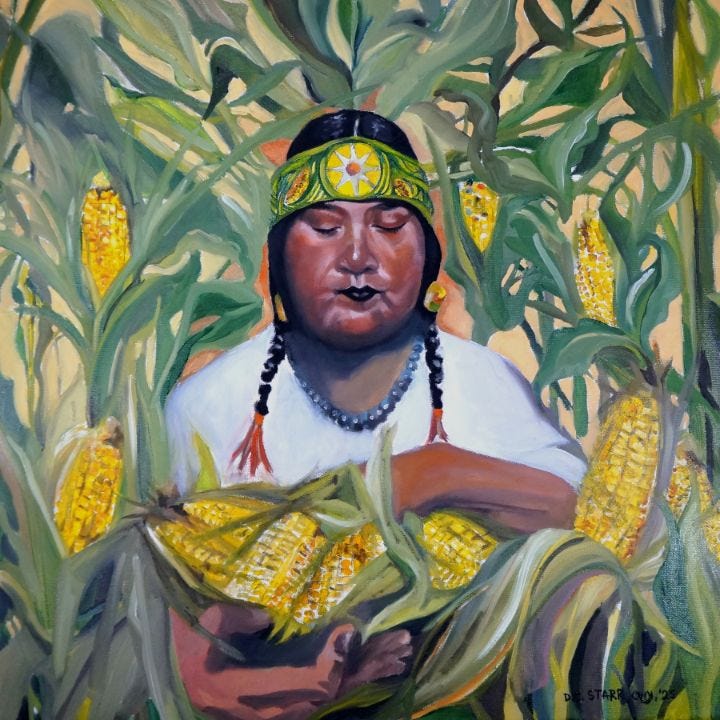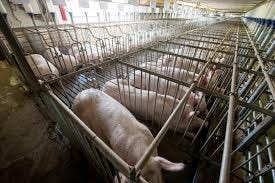Agriculture and the Sacred
Are we witnessing the reawakening of an ancient form of consciousness?
An earlier version of this article was published in the newsletter of RSF Social Finance in 2013 when I was Executive Director of the Biodynamic Association. Later, it was picked up and published on the blog of a wonderful Sufi group called Seven Pillars of the House of Wisdom and they then included it in a book of essays they published in 2018 called Journeys and Awakenings: Wisdom for Spiritual Travelers (Sacred Spirit Books) I thought it would be a perfect piece to share at the launch of my new substack because I suspect it is relatively unknown to most of my current readers, and because it is perfectly situated at the metaxic intersection of my work in agriculture and my work in spiritual science. One thing to note, however, is that since the time I wrote this article, we have witnessed the flowering of a form of environmentalism that in many respects seeks to undermine the promising awakening that I describe in this article. It is thus my intention to write a sequel to this article in the near future addressing the challenge of staying true to the original calling of the environmental movement.
Image credit: Sacred Corn by Donald Corpier Starr.
To live, we must daily break the body and spill the blood of Creation. When we do this knowingly, lovingly, skillfully, reverently, it is a sacrament. When we do it ignorantly, greedily, clumsily, destructively, it is a desecration. — Wendell Berry
In ancient times agriculture was intimately connected with the sacred. We find evidence of this in a host of texts and in many traditions which survive to this day. We know, for example, that for the indigenous people on the American continent, the corn plant is believed to have come into being through a long process of cooperation between human beings and the gods, and to grow corn is still a sacred activity for many Native American people today.
If we try to discern the ultimate source of these traditions, we discover that people in ancient cultures experienced the natural world much differently than we do. Where today we might see, for example, simply a corn plant (tall stem, tassels, ears, husks, silks, yellow kernels, etc.), they saw the body of a spiritual being whom they felt to be the ultimate source of the unique traits and gifts of that particular plant species. This vision of the spiritual in nature endowed all creatures and all creation with a special kind of dignity.
It was thus not enough for ancient cultures or indigenous people to simply plant a corn seed at the right time in the right soil, and then cultivate the plant during the growing season until harvest. Growing corn also required prayers and rituals that would invite the spiritual being of corn to participate in the growth of the plants and so bless the people with her radiant wisdom and health-giving powers. Maintaining this sacred connection with the gods through agriculture was at the heart of the life of ancient cultures and echoes of this religious feeling toward nature survived in indigenous and rural farming communities for centuries.
Through his spiritual research, Rudolf Steiner discovered that the gradual loss of this way of experiencing the natural world among the majority of the world’s population was an inevitable and necessary part of the evolution of human consciousness. This loss paved the way for a much clearer way of seeing the physical world, and eventually led to the discovery of the physical laws of matter and to modern technology.
Through this process, we have also come to experience ourselves more and more as unique individuals independent of nature, culture, race and one another. With this independence comes freedom: the freedom to choose our own vocations, community and ideals—as well as the feeling that we are responsible for our own actions. This sense of individual freedom and responsibility is the gift, the silver lining, you could say, of the advent of materialism.
The healthy age of materialism has long since passed, however, so that today we bear witness primarily to the shadow side of materialism rather than its gift. We have become so enamored of our seeming power over nature, that we are undermining the very fabric of life on earth. This is perhaps nowhere more evident than in agriculture where practices like confined animal feeding operations (CAFO’s) and the genetic engineering plants and animals (GMO’s) betray a consciousness completely devoid of any remaining sense of the dignity-bestowing spiritual beings at work in landscapes, organisms, creatures and species.
There is nonetheless, I would suggest, a silver lining to this post-materialistic devolution of values. In the depths of the crisis brought on by these destructive trends, we can discern a new, individualized, eco-spiritual consciousness of the world re-emerging. From thousands and thousands of humble, everyday people—farmers, eaters, scientists, educators, artists and business people—a grassroots awakening to the ecological and spiritual realities that sustain the earth and her creatures is taking place. The being of Gaia, we could say, is finding a home again in the souls of modern human beings.
This new consciousness, I would suggest, is the ultimate source of inspiration for the growth of the ecology movement of the 1960’s, the health food movement of the 1970’s, the environmental movement of the 1980’s, the organic farming movement of the 1990’s, the local food movement of the 2000’s, and a host of other allied movements too numerous to mention. It is also, of course, the inspiration for the biodynamic movement which seeks to demonstrate the many practical ways this new consciousness of sacred can bring renewal to the earth and to the practice of agriculture.
Yes, the sense of the sacred is reemerging in the food and agriculture movement of today, as the quote from Wendell Berry at the beginning of this article so beautifully brings to expression. Yet it is important to remember that this new consciousness of the sacred, while related, is not the same as that possessed by ancient cultures. This awakening is not embedded in collective religious practices or cultural norms, but rather has emerged as a natural extension of healthy scientific inquiry and is thriving in the context of a cosmopolitan confluence of diverse philosophical perspectives and cultural traditions. This new sense of the sacred is thus rooted in and sustained by a contemporary sense of individuality and freedom of thought.
In this otherwise deeply troubling moment in human history, this awakening, this tender, fragile but growing movement toward a reunion of agriculture and the sacred, can give us hope.





What speaks to me here is the sense that this is less about returning exactly to the same place but about arriving at a parallel point further along the spiral of humanity’s process. Thank you for giving me reason to pause and consider the weaving together of the freedom of individuality we’ve been given in this era with the reverence we’ve lost along the way here.
This is exactly what the term metaxy (which you introduced me too!) means to me Nate, namely the ability to unite seeming opposites into a higher synthesis--in this case the seeming opposites of a strong, individual self-consciousness with a luminous awareness of the sacred in other beings.